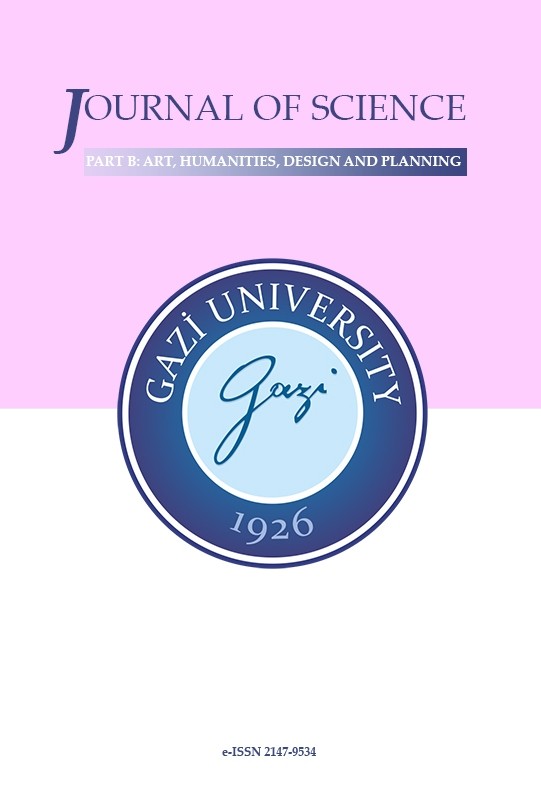THE CONCEPT OF THE INFINITE SPACE CONCEPT ON THE CHAOS THEORY IN POSTMODERN SOCIETIES
THE CONCEPT OF THE INFINITE SPACE CONCEPT ON THE CHAOS THEORY IN POSTMODERN SOCIETIES
Infinite Space, Chaos Theory Architectural Space, Chaotic Design,
___
- Heidegger, M. (2008). Düşüncenin Çağrısı. İstanbul: Say Yayıncılık.
- Adam, S. (2010). Mimarlar İçin Heidegger. İstanbul: Yem Yayınları.
- Aras, L. (2014). Bir Mimarlık Bilinmeyeni: Postmodern Gündelik Yaşamda ‘Konut’ Tükendi mi? Megaron, 103-112.
- Bilgin, İ. (2016). Mimarın Soluğu. İstanbul: Metis Yayınları.
- Semper, G. (2015). Mimarlığın Dört Öğesi Ve İki Konferans. İstanbul: Janus Yayıncılık.
- SEVİNÇ, M. (1999, Ağustos). Postmodernizm ve Kent. Birikim Dergisi.
- Turan, M. (2008). Kaos Teorisi: Bauman ve Bakhtin. Araştırma Ankara Üniversitesi Dil ve Tarih-Coğrafya Fakültesi Felsefe Bölümü Dergisi, 45-66.
- Vitrivius. (2017). Mimarlık Üzerin. İstanbul: Alfa Basım Yayım Dağıtım.
- Yurtsever, H. (2014). Kozmoz-Kaos-Kübizm. Ankara: Detay Yayıncılık.
- Yayın Aralığı: Yılda 4 Sayı
- Başlangıç: 2013
- Yayıncı: Gazi Üniversitesi
LEED CERTIFIED OFFICE BUILDINGS’ POST OCCUPANCY EVALUATIONS OF ENERGY PERFORMANCE VALUES
Leyla Senem GÖRGÜLÜ, İdil AYÇAM
THE “ORDER OF THINGS"IN MEDIA CUBE: TRANSPARENCY AS A DESIGN TOOL IN NTV NEWS STUDIO
Gözde ALTIPARMAKOĞLU SAKARYA, Gülru MUTLU TUNCA
TO MAINTAIN THE HISTORICAL SACRED SPACES: ANKARA-HACI BAYRAM DISTRICT
Nevin TURGUT GÜLTEKİN, Ayşe Nur CANBOLAT
IDENTIFICATION OF THE CHARACTERISTICS OF HATUNIYE SUBURB AND YALIBOYU HOUSES IN AMASYA CITY
Dilruba Gökçe ATEŞ, Nakış KARAMAĞARALI, Özlem SAĞIROĞLU
The Image as a method of teaching in Art education
Mowafaq ALSAGGAR, Monther AL ATOUM
The factors affecting consumer decisions in the office furniture sector
Emrah DEMİRHAN, Abdullah TOĞAY
THE CONCEPT OF THE INFINITE SPACE CONCEPT ON THE CHAOS THEORY IN POSTMODERN SOCIETIES
Berna ÖZDEMİR, Arzu ÖZEN YAVUZ
SPATIAL FLEXIBILITY IN MUSEUM BUILDINGS AND EXAMINATION OF CURRENT SAMPLES
